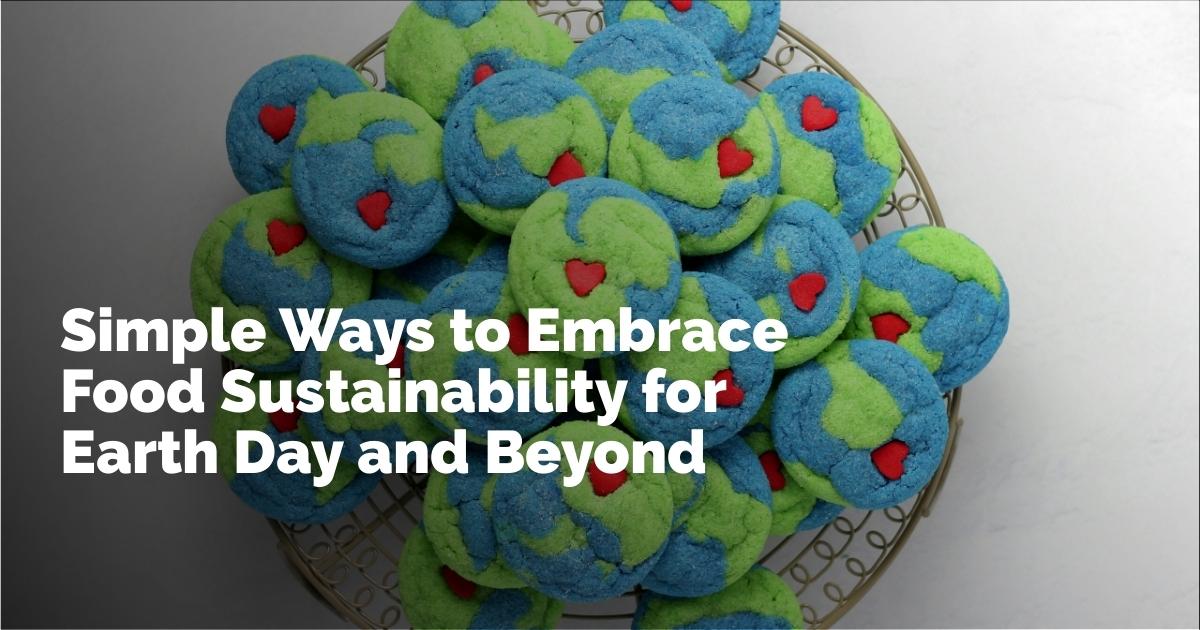Making Sustainable Food Choices for Earth Day and Beyond
Every meal presents us with a decision that affects not just our health, but also the health of our planet. By adopting mindful eating habits, we can lessen our environmental impact significantly. Though Earth Day is a timely reminder to consider our ecological footprint, simple changes in our food choices can contribute year-round to sustaining our planet's resources. Below, we explore nine practical tips to bolster food sustainability in your everyday life.
1. The Benefits of Part-Time Vegetarianism
Embracing a vegetarian lifestyle, even partially, can have substantial environmental benefits. The Meatless Monday movement has gained popularity as a straightforward step individuals can take to reduce their carbon footprint. By forgoing meat just one day a week, you are contributing to lessening greenhouse gas emissions and conserving water resources. Consider incorporating additional meatless days, such as Wednesday, to further enhance the positive impact. Incorporating plant-based proteins like beans, legumes, and nuts can ensure a balanced diet on these days.
2. Responsible Meat Consumption
For those who enjoy meat, thoughtful sourcing is key to minimizing environmental damage. Buying meat from organic, responsible sources ensures that you are supporting sustainable agriculture. Engaging directly with local butchers or farms participating in whole animal practices can improve traceability and sustainability. This conscious practice not only supports eco-friendly farming but also often results in better quality and taste.
3. Eating Ultra-Local
The local food movement encourages reducing the distances food travels from farm to table, thereby decreasing carbon emissions. This Earth Day, challenge yourself to embrace ultra-local eating. This means sourcing food from local cooperatives or community-supported agriculture (CSA) programs that offer produce directly from nearby farms. Even small changes, like biking to the grocery store, can enhance your commitment to local consumption.
4. Smart Food Substitutions
You don't need to sacrifice your favorite dishes for sustainability. Substituting less eco-friendly ingredients with sustainable alternatives can significantly reduce environmental impact. Dairy production, for instance, has a large carbon footprint, so try using avocado as a creamy substitute in recipes that call for cheese or cream. Be open to exploring and experimenting with other substitutions that align with your palate and sustainability goals.
5. Embracing Seasonal Eating and New Ingredients
Seasonal eating aligns consumption with natural cycles, promoting ecological balance. By consuming fruits and vegetables that are in season, you reduce the need for importing produce, which ensures fresher food and decreases transportation emissions. Use tools like regional seasonality guides to know which produce to prioritize each month. Adding a new seasonal ingredient to your menu weekly can encourage variety and creativity in your meals.
6. The Environmental Impact of Home Cooking
Cooking at home can significantly decrease your carbon footprint compared to dining out. Home-cooked meals require less energy and minimize the need for industrial processing, storage, and transportation. Make an achievable goal of preparing meals at home at least five nights a week. This practice not only benefits ecological sustainability but also often results in healthier food choices.
7. Preserving Foods for Sustainable Living
Food preservation is an excellent method to minimize waste and enjoy local produce year-round. While jams and canned tomatoes are classic summer projects, winter canning can be equally rewarding. Explore preserving winter vegetables like beets and cabbages through pickling to ensure that your cupboard is well-stocked with flavorsome, eco-friendly options, regardless of the season.
8. Opting for Sustainable Seafood
Overfishing strains marine ecosystems, but making informed choices about the seafood you consume can alleviate this pressure. Smaller fish, such as mackerel and sardines, are generally more sustainable as they are lower in the food chain and reproduce quickly. Incorporate these fish into your diet, exploring recipes that highlight these flavorful options.
9. Supporting Sustainable Restaurants
Eating sustainably doesn't have to end when you choose to dine out. Many restaurants are adopting greener practices by sourcing local ingredients and employing eco-friendly methods in their kitchens. Choosing these establishments not only supports the sustainable food movement but also encourages more restaurants to adopt similar practices. Resources like the Eat Well Guide and the Green Restaurant Association help diners make informed decisions about where to eat.
In a busy world, integrating sustainable eating habits into daily life can sometimes feel daunting. However, every small effort counts toward a healthier planet. By prioritizing sustainability in the choices we make—whether at home or dining out—we each take part in preserving our world for future generations. Let Earth Day serve as a catalyst for change, inspiring us to adopt deeper, lasting habits that nurture the environment and our well-being.
출처 : Original Source

